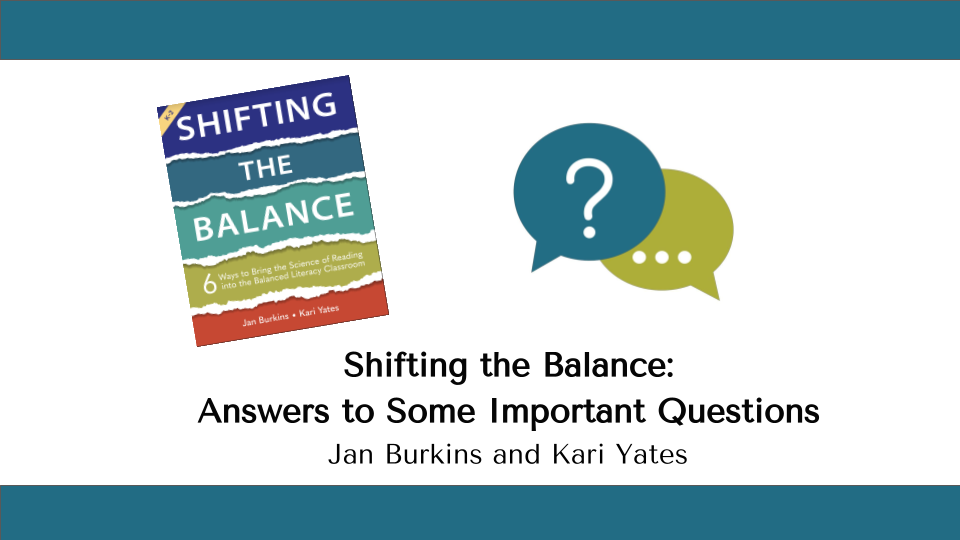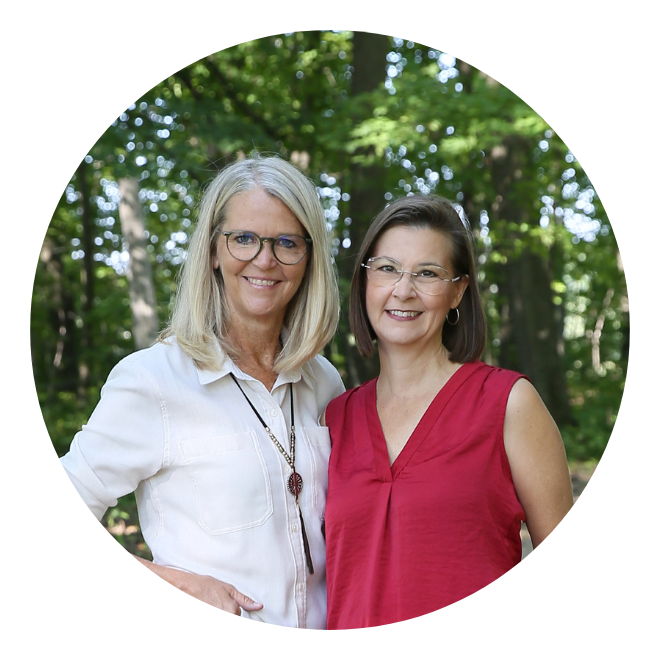The work we do is driven by a deep respect for and belief in teachers and children. Our goal is to share our admiration for teachers while also supporting substantive change by making information accessible. We actively practice attuning to both the technical and emotional realities of this work. It is important to us to acknowledge that the shifts we propose in Shifting the Balance can feel really vulnerable, as readers realize that some of our past practices may have made things harder (rather than easier) for children.

QUESTION: Why treat this conversation about change to instructional practice as though it is delicate?
ANSWER: It’s no surprise that change can be very vulnerable work, and the conversation about shifting to more science-aligned practices is no exception. To think about turning away from practices that we have learned from scholars, researchers, and thought leaders for whom we’ve had deep levels of trust and respect requires courage. In fact, some of the changes we ask of teachers may require them to move in opposition to peer groups they’ve studied with and worked alongside, sometimes for years. As human beings, a sense of belonging and safety is paramount to our wellbeing, and learning can’t happen without it. Yet, we have found that if we create a sense of safety within a transitional community–where, without shaming or judgment, teachers can come to grips with the practices that need revision–then the classroom changes that children need are more likely to happen.
And while we take to heart any feedback that invites us to reconsider the tone of the book, we choose to weigh that feedback with the many voices of teachers we hear from every day who have found the book to be respectful, welcoming, and accessible. We hear regularly from educators who appreciate that the book meets them where they are and provides space and support for coming to terms with its shifts to practice. `

QUESTION: Why propose that we “REINVENT” MSV instead of simply making a clean break from an unhelpful set of practices?
ANSWER: Our decision to utilize the components of MSV to build an alternative–V>MS–was an intentional move to build on a vernacular that is familiar to the balanced literacy community, our intended audience. Reinventing something familiar also supports our overarching goal for the book, which is to build some bridges where we currently see some well-fortified walls. Adam Grant’s book, Think Again: The Power of Knowing What You Don’t Know (Viking, 2021), makes clear that the science of change shows us that people are more willing to make changes when they understand what is not going to change. Building a new model that repurposes, and even redefines, some of the elements of the old is one way to navigate this tricky space. For people on either side of the conversation, MSV is often the most triggering topic and is therefore the place where the conversation is most likely to fall apart. And, when educators leave the conversation–due to overwhelm, defensiveness, or frustration–we all lose the opportunity to help students through changed practice.

QUESTION: But, the early pages of Chapter 5 make it seem as though you are advocating for the traditional MSV model. Are you?
ANSWER: On pages 111-114, nestled between the opening scenario and the section where we start to clear up some misunderstandings, we include a description of the MSV model. The purpose of articulating the MSV model in the opening of Chapter 5 was to build background for those who might not be familiar with or clear on what that model represents. We chose to do this so that readers would be on common ground, as we shifted into describing the ways the MSV model is problematic and needs to change.
What we’ve come to realize is that dedicating that much real estate to explaining MSV has implied to some readers that we are advocating for, or “doubling down” on, this model, which we are not. In a way, we now realize, the information on pages 111-114 could have been labeled as its own BIG misunderstanding.
We intentionally placed Chapter 5 at the end of the book. Chapter 5 is meant to be read in both the context of the science established in Chapters 1-4 and in the context of the thinking that follows in the remainder of Chapter 5 and in Chapter 6. Chapter 5 was never intended as a stand-alone text.

QUESTION: Doesn’t the term VISUAL itself imply a “LOOK-SAY” or “WHOLE WORD” approach to reading?
ANSWER: We acknowledge that, for many educators, the term “VISUAL information” may carry some baggage.
For some, it implies using a “LOOK-SAY” or “WHOLE WORD” approach. For others, it may be mistakenly tangled up with the unhelpful practice of over-relying on picture cues rather than orthographic information. For others, the term visual implies an inaccurate theory of reading that stems primarily from “seeing” words without respect for the linguistic nature of the reading process, especially with regard to phonological processing.
In our experience, when a reflective practitioner uses common prompts for “visual” information, what they are actually asking is “Is the sound/spelling relationship right?” or “Did the letters (grapho-) on the page match the sounds (phonemic) in the word you said?” So, we chose to build on that practice by asking teachers to always prompt children to completely decode the words before confirming with context.
So, in light of how much we ask of balanced literacy teachers in Chapter 5–teaching students to decode first and always when they encounter unknown words–we decided to keep but repurpose the term visual as a familiar reference to that decoding work. Engagement with the visual and phonological–or graphophonemic–aspects of the word enables both decoding and orthographic mapping. In fact, we wish that we had also introduced the term graphophonemic in the chapter.
We are committed to deepening readers’ understandings of the speech-to-print connection as we connect with them in various spaces.

QUESTION: Doesn’t “meeting teachers where they are” create a risk that some children won’t get the benefit of change fast enough?
ANSWER: The only path we know for making lasting change for children is through the adults who serve them. Some have suggested that our approach doesn’t push hard enough. It is true; Shifting the Balance does not expect teachers to change everything all at once. To be clear, Shifting the Balance is an entry point to changing practices by developing understandings of reading science.
We believe in teachers and we believe that there is only ONE way forward to any future goal, and that is to take some action right now, in the present. Even when more comprehensive and transformative change is the ultimate goal, there still has to be a starting point. Bigger change can then unfold as teachers engage with one shift and then another, because momentum builds one shift at a time.
Resistance is real. That’s why we’ve dedicated the first half of every chapter to building a foundational understanding of the science, or the WHY for making the shift. Overwhelm is also real. And that’s why we’ve dedicated the second half of every chapter to the HOW of making the shift. Shifting the Balance includes dozens of simple places to begin, starting points that teachers can try out tomorrow, and get results that motivate them to do more.
If you already have strong traction with science-aligned practices and your efforts to support change are already working in your corner of the world, then this book may not be for you. But if you, like so many of the educators we’ve encountered, are running into roadblocks in your efforts to change practices, then perhaps a different approach to building momentum is worth considering.




Recent Comments